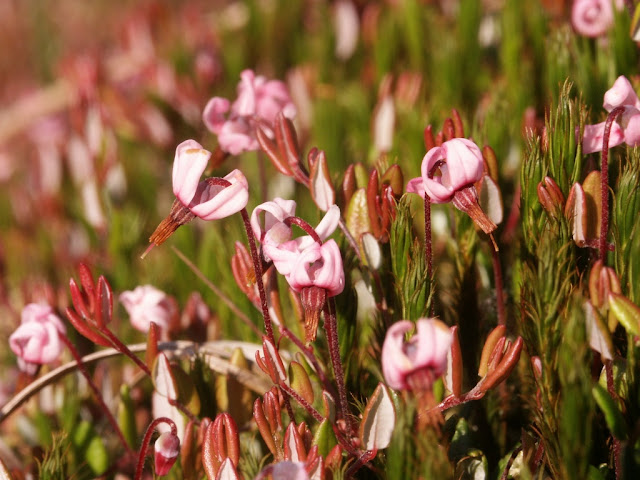A staple accompaniment to turkey during the holidays, the little cranberry native to northern North America called the Vaccinium oxycoccos was long prized by Native Americans. Cranberries are an important food source and also had many medicinal uses.
About Cranberries
This genus of cranberry is widespread throughout northern Europe, Asia, and North America. It is a small evergreen shrub with vine-like stems that root at the nodes. The lance-shaped leaves are small and leathery. This plant produces flowers on stalks that arise from axils of leaf-like bracts at the base of new shoots. The flowers are white to pinkish and resemble a lily because of the way the lance-like petals curl back. The slender stalks are hairy and reddish in color. The mature fruit is a shiny dark red round berry that is between 1/4 and 1/2 inch in diameter. The plant flowers in June and July and the fruits ripen in September and October. The cranberry is found in wetlands and bogs and spreads by layering.
Medicinal And Culinary Use
Cranberries are foraged and consumed by Native Americans. The 1999 Encyclopedia of American Food and Drink states: "The Native Americans of New England, who called them sassamensesh or ibimi, long enjoyed cranberries, both raw or sweetened with maple sugar." They were also dried and stored for later use. Berries were added to soups, boiled down into a sauce, and ground into flour that is used for flavoring. Some Inupiat cook cranberries with fish, eggs, and blubber."
Native Americans use berries, twigs, and bark for medicinal purposes that includes the treatment of bladder ailments and kidney disease. A poultice of cranberries is made to help heal wounds and tumors. This is a good idea because cranberries have properties that fight off common bacteria. The Ojibwa make an infusion of the cranberry plant and use it to treat nausea.
Did You Know...
Cranberry flowers attract native bees, butterflies, and moths.
Cranberry leaves stay green all winter long.
Other names for the Vaccinium oxycoccos include bounce berry, marsh-wort, fen berry, moss berry, northern cranberry, small cranberry
We consume about 400 million pounds of cranberries a year.
English settlers arriving on the coast of New England ate cranberries to ward off scurvy.
Today many studies show that cranberries have high levels of a class of polyphenols that give the berry its red color making it very high in antioxidants.
Today some people drink cranberry juice to help ward off bladder infections. Cranberries have a compound of properties that prevent common bacteria from attaching to cell walls.



No comments:
Post a Comment